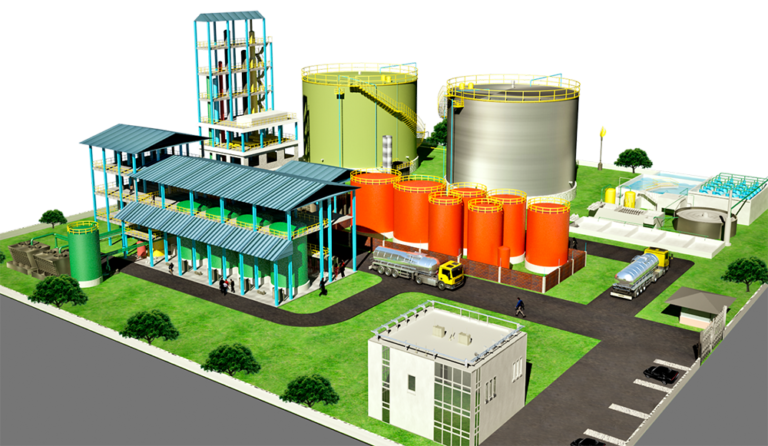Project Report For Distillery Plant
Introduction
Project Report For Distillery Plant is as Follows.
A distillery plant is a facility that is especially intended for the distillation of alcoholic drinks. Distillation is a method of separating liquid components based on their differing boiling points by heating a liquid combination. Spirits such as whisky, vodka, rum, gin and brandy are usually connected with distillery plants.
The processing of raw materials is the initial stage in a distillery facility. Depending on the kind of alcoholic beverage, raw ingredients may include grains (such as barley, maize, or rye), fruits (such as grapes or apples), or other fermentable sugar sources. These raw ingredients are treated and milled in order to obtain the sugars required for fermentation.
The fermentation process comes next. In massive fermentation tanks, the extracted sugars are combined with water and yeast. Through a process known as fermentation, the yeast transforms the carbohydrates into alcohol. This produces a liquid known as “wash” or “beer,” which includes alcohol as well as other chemicals.
The wash is then delivered to the distillation device, known colloquially as stills. Heating and condensation are the two fundamental processes in distillation. When the wash is heated, the alcohol vaporises at a lower temperature than the other ingredients. The vapour passes through a series of pipes before being cooled and converted back into liquid form. This condensed liquid, known as distillate or “new make spirit,” contains more alcohol than the original.
Distillate is separated into fractions based on its alcohol concentration and flavour character. The first part, known as the “heads,” comprises undesired and potentially dangerous volatile chemicals. The intended result is the centre portion, known as the “heart,” which includes the desired alcohol concentration and flavours. The last percentage, known as “tails,” contains less alcohol and contaminants. After distillation, the spirit may go through further procedures such as ageing, filtration, and mixing, depending on the product’s specifications. Ageing is especially crucial for spirits like whisky and brandy because it gives flavours and character by interacting with oak barrels.

Types Of Distillery Plant
Whisky Distillery: Whisky distilleries make whisky, which is generally created from fermented grains like barley, maize, rye, or wheat. These distilleries frequently use traditional copper pot stills and may use unique ageing techniques to enhance whiskey’s particular flavours and attributes.
Vodka Distillery: Vodka distilleries manufacture vodka, a clear and neutral alcohol. Although additional components like as fruits or sugar may be used, vodka is typically prepared from fermented grains or potatoes. Continuous column stills are commonly used in vodka distilleries for efficient production and several distillations to obtain high purity.
Rum Distillery: Rum distilleries make rum, which is generally manufactured from sugarcane juice or molasses. Depending on the intended rum style, these distilleries frequently utilise pot stills or column stills. Rum is commonly aged in oak barrels to improve flavour and character.
Gin Distillery: Gin distilleries produce gin, which is a liquor flavoured with botanicals, typically juniper berries. Gin is prepared by starting with a neutral spirit base, such as grain or molasses, and then flavouring it with different botanicals. Gin is frequently produced in distilleries using column stills or vacuum distillation technologies.
Market Potential Of Distillery Plant
A CAGR of 6.79% is expected to occur between 2022 and 2027, growing the Distillery Market from its estimated value of USD 10.79 billion in 2021 to USD 14.89 billion by 2027.
Factors such as shifting customer demographics, developing consumption habits, regulatory frameworks, and global trade dynamics can all have an impact on the market potential of distillery facilities. To properly position themselves and exploit market possibilities, distilleries must be updated about market developments, customer preferences, and industry laws.
Market research surveys, industry magazines, and alcoholic beverage consulting organisations can give more extensive and up-to-date insights about the market potential of distillery facilities. To estimate the possible possibilities and difficulties that may exist in 2023, a complete market study relevant to the target area or market segment is recommended.
Project Report Sample On Distillery Plant
Need Help?
Create 100% Bankable Project Report

